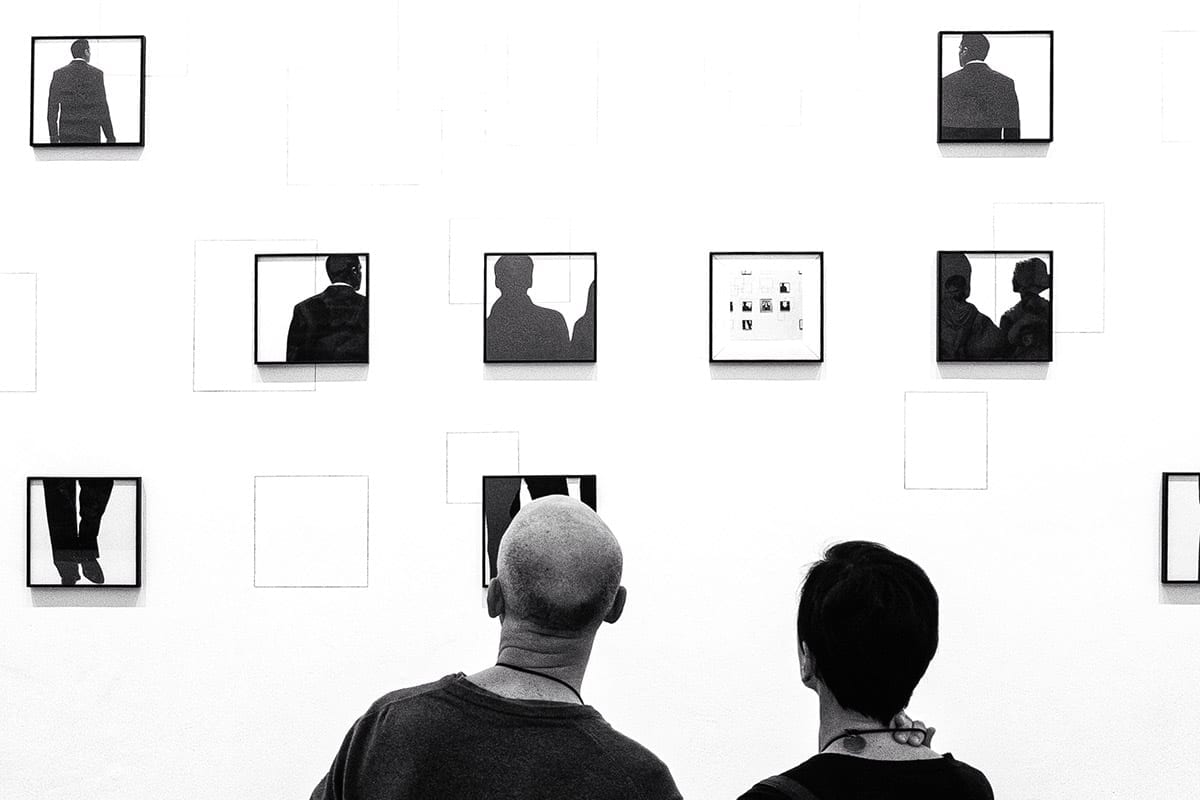How to review creative when you’re not

Reviewing creative is hard.
A good campaign strategy is logical and measurable. A good brand proposition is coherent and differentiated. And good creative just kinda feels right…right?
But sometimes it doesn’t. Does that mean it’s wrong? How can you tell? Aye, and there’s the bloody rub – how do you review creative, fairly and constructively, when you’re not one yourself?
It’s worth clarifying that I’m not a capital-C Creative myself. I work in client services and am what the agency world calls ‘a suit’. My paintbrush is Microsoft Outlook and my canvas is Google Calendar. My Michelangelo is Mad Men’s Roger Sterling, and my relationship with Creative is usually ‘at arms-length’. As the creative department and client go-between, I’m often navigating the frustrations of both sides.
Good creative feedback, given with thoughtfulness and sensitivity, can help to inform and guide an early idea into something that both the client and the agency can be proud of.
Bad creative feedback can stall, stifle and strangle good ideas, put pressure on relationships, demotivate teams, and increase costs.
To avoid that, then, here are my tips on how to review creative effectively:
Be mindful of subjectivity
Subjective feedback leads to the greatest frustrations. When feedback represents personal preference rather than audience insight, it can create tension between satisfying the client and meeting the brief. Personal preferences such as “It’s good but I just don’t like green” or “He looks like my ex, so we need a new model” can often bring an agency and client to loggerheads. A good creative team will work closely with the strategy and client services teams in creating work that will engage and resonate with their target audiences, and stand out in the context of the wider industry and competition.
TIP: If you’re someone who enjoys being a part of the creative process, then work with your agency to build WIP tissue meetings into the process from the beginning. It can be hugely beneficial to have that input and guidance throughout the journey, working as partners, rather than at the end.
TIP: It may sound obvious, but go back to the brief. Does the creative align with the original objectives and does your feedback do the same? If not, as well as the possibility of misinterpretation by the agency, it could be the brief that needs reviewing or refining.
Manage stakeholder input
When timings are tight and deadlines are looming, getting input from the right people can be a logistical nightmare. Even with close client and agency contact and communication, it’s difficult to account for what changes might be demanded when Player 3 enters the game. And as above, if mismanaged, feedback can be subjective, disparate and obstructive.
TIP: Create a structure for constructive feedback with a template that encourages feedback on the right areas, reinforces the brief, and gives a consistent framework to align and merge the different feedback sources. If shared through a cloud service like Google or Smartsheets, it can be useful for stakeholders to see how their feedback compares to others, creating a forum for discussion rather than a send-and-forget. For example:

Avoid providing answers
***
[Header photo: Martino Pietropoli on Unsplash]
—
Trust, honesty and transparency can ensure that all parties feel fulfilled and that the work is informed and on brief.
Empathy and understanding will ensure that even through difficult conversations, the dialogue is informative and fair.
And rather than being a point of friction, creative feedback can be the ideal opportunity for both parties to work as true partners, share expertise, and celebrate some bloody good work.
***
[Header photo: Martino Pietropoli on Unsplash]
In my years at Earnest, I’ve been fortunate enough to have spent time behind the magician’s curtain, giving me at least a partial understanding of the work involved in creative development: the cultivation of inspiration, the hours of thinking before pen even touches paper, the countless iterations, and the wastepaper basket.
But most businesses working with creative agencies don’t have the benefit of that exposure to the creative process. They haven’t seen the three pages of sans serif font experiments, the 17 shades of pale mauve that didn’t work, or the hundreds of ‘smiling man in suit’ stock photos that didn’t make the cut.
Therefore the first round of creative presented to the client has often already been through a dozen rounds of amends already with the style, colours, fonts, and content carefully chosen – so it can be frustrating for the creative department when feedback comes back as a suggestion or a solution, rather than a question.
TIP: If there’s something in the creative that doesn’t look or feel right, ask yourself ‘why?’. Is the colour used by a competitor? Does your boss have a thing against a certain style? Being able to articulate the issue will help you make the most of your agency’s experience and expertise. “I’m concerned it’s not standing out enough” is more useful than “Can we make it yellow?”
—
Trust, honesty and transparency can ensure that all parties feel fulfilled and that the work is informed and on brief.
Empathy and understanding will ensure that even through difficult conversations, the dialogue is informative and fair.
And rather than being a point of friction, creative feedback can be the ideal opportunity for both parties to work as true partners, share expertise, and celebrate some bloody good work.
***
[Header photo: Martino Pietropoli on Unsplash]
